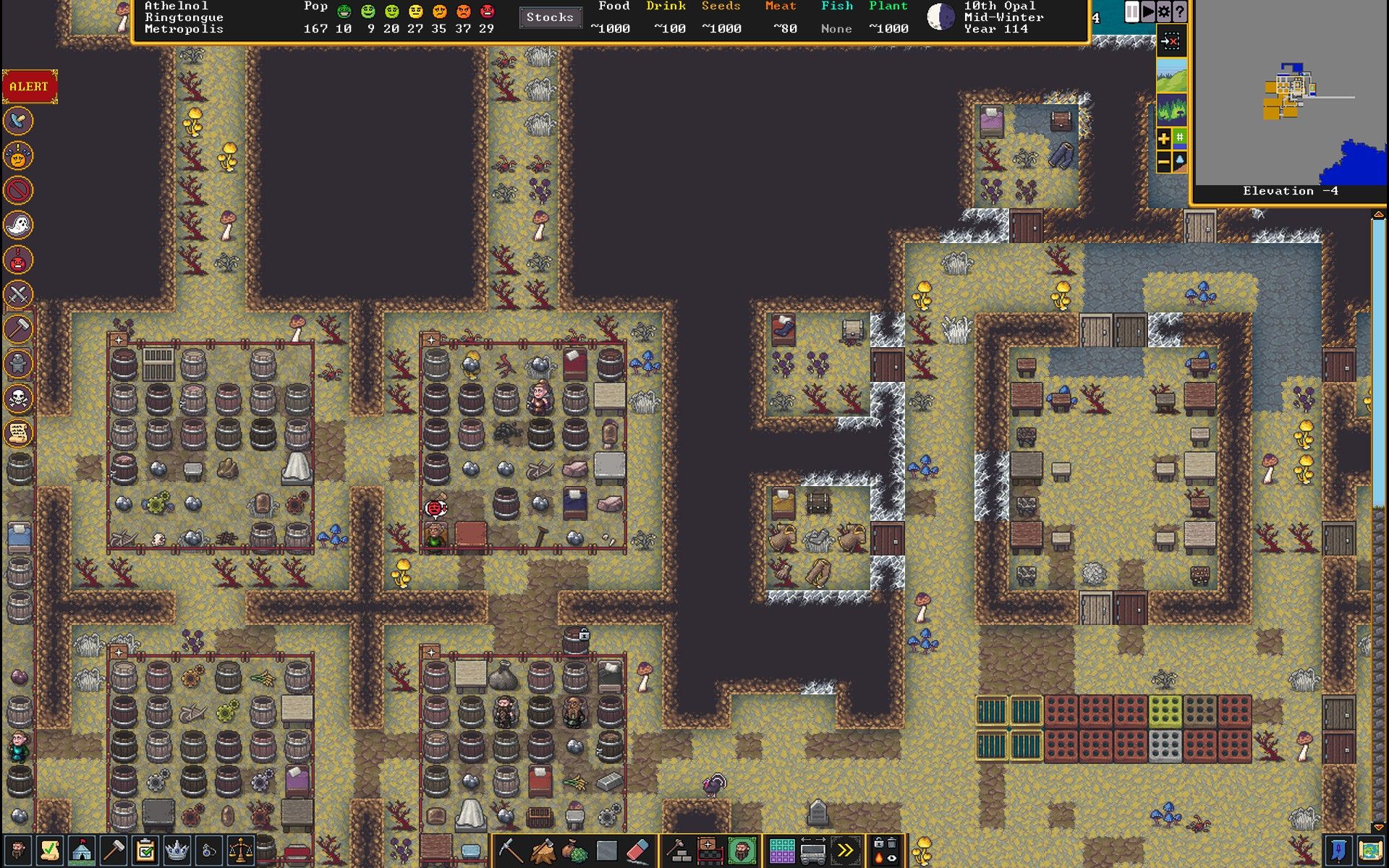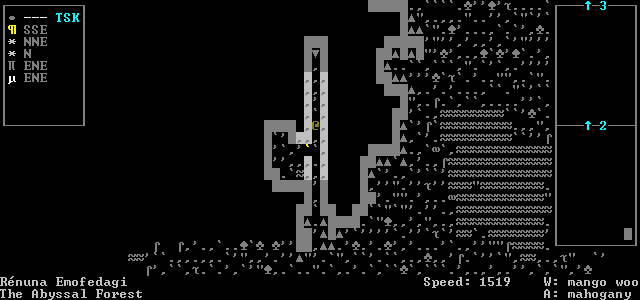A Giant About Dwarves

Most of you will probably have heard of The Sims and even played it: a video game franchise that revolves around simulating the lives of virtual characters all with their own personality and background. It is probably one of the most well-known simulation games in existence. Simulating the virtual characters creates a unique world that almost appears to be alive. However, maybe you are someone who is more into simulating the bigger picture and prefers not to deal with the individual: then a game like SimCity (or nowadays City Skylines) will probably sound familiar to you. In City Skylines, everything revolves around designing and governing a city: from policy to infrastructure.
If you want to think even bigger than this, we quickly turn to even more ambitious simulations: for example, the simulation of planets and entire universes. However, each simulation seems to limit itself to its own niche: a city simulator does not look too deeply at the individual citizen, and a life simulator like The Sims stays far from city complexity. Despite all this, there appears to be one exception to the rule: Dwarf Fortress.
In 2015, it rained bug reports within the Dwarf Fortress Community: players of this game kept finding fallen cats in the taverns they had built for their dwarves. After all the enormous influx of bug reports, Tarn Adams, the game’s creator, went digging to find the cause of this problem. After a brief analysis, he had found it: In the taverns, it happened quite often that dwarves spilled their alcoholic beverages; The liquid, of course, ended up on the ground. The cats in the tavern then walked through the liquid, causing the drink to get on their paws. When they then went to lick their paws clean (as a cat tends to do quite often), they suddenly dropped dead, because due to an error, the game grossly overestimated the amount of alcohol on their paws and thus gave them a heart attack due to alcohol poisoning.
Dwarf Fortress, officially launched as “Slaves to Armok: God of Blood Chapter II: Dwarf Fortress”, is a fantasy simulation game developed by Tarn and Zach Adams, the brothers who make up the independent game studio Bay 12 Games. Development of the game began in 2002, and its first alpha release was released on 8 August 2006. The game has been in development ever since, now totalling around 700.000 lines of code. The project is primarily a passion project of Tarn Adams, who does most of the development and programming, which has resulted in a rich but complex simulation game with an intense learning curve.

The example of the aforementioned perishing tavern cats serves as a bizarre reminder of just how complex the world of Dwarf Fortress is: the basic principle of the game seems simple, building a dwarf colony, but is so much more complex than that: when one starts a new game in Dwarf Fortress in the Fortress Game mode, the first question you will be asked is how old you want your world to be. This is certainly not an arbitrary question either: based on your answer ranging from 5 to 500 years, a complete history will be generated. This history is not just a flavour backstory either: all the characters, locations, artefacts and monsters the game pre-generates have influenced how the world looks at the moment you start the game. So at the moment you start your humble dwarven settlement, entire civilisations have emerged, left their mark on the world and possibly collapsed . And the best part of all this? The game even lets you read back all this history, should you find the time and interest.
From here, you get to choose a location to establish your own fortress: each location has its pros and cons: if you start in a haunted biome, a true challenge awaits you. Do you choose a paradise biome? Then it will probably be a smoother start. In any case, bear in mind that war with goblins is often inevitable… And even then: the hordes of goblins you may encounter are probably the least of your troubles. Ancient, forgotten beasts lurk in the depths, strange creatures wander the earth and one might even stumble upon ancient underground vaults, created by the primordial gods of your randomly-generated world. The unforetold treasure they hold does not come without cost however.
Dwarf Fortress plays like a colony Sim and if you were to look at it superficially, you might not even notice what makes it so special, besides its unusually complex world-generation. Looking under the bonnet, however, reveals the most complex world simulation ever made. It is not an overstatement to say that if something can be simulated, there is a good chance it will be simulated. This includes, but is not limited to: The state of every specific body part of every individual dwarf in the fortress, the politics of every state in the world and, of course, how much alcohol cats have on their paws.

All this results in emergent storytelling: every playthrough is different and the game creates its own storylines in this way. Control is often an illusion: the world is a symphony of beautiful chaos, though a consequential chaos nonetheless, dictated by an underlying sea of code. The game will never just spawn a monster in your playing field: rest assured it just happened to wander upon your base.
Only until recently, there was a problem that kept people from playing Dwarf Fortress: the graphics of the entire game consisted of pure Ascii, nothing more. Luckily, in 2019, the Adams brothers announced a partnership with Kitfox Games to launch a premium version of Dwarf Fortress on Steam and itch.io, with improved graphics and sound. The move was taken to generate additional revenue to support their personal financial needs, including medical expenses.
On 6 December 2022 it finally happened: The Steam release of Dwarf Fortress. The game sold like hot cakes and the Adams brothers soon had 7 million Dollars coming in within a short month. At last, Dwarf Fortress was available to the wider public and thus the impetus for this article was born.
Besides the admiration the project deserves in itself, one should not underestimate how much influence Dwarf Fortress has had on the modern world of video games. Minecraft creator Markus “Notch” Persson has acknowledged that Dwarf Fortress was a major influence on his own game. Minecraft’s procedurally generated worlds and its focus on building, digging and survival are ideas we also see in Dwarf Fortress. It’s not just Minecraft, though: countless games have taken inspiration from Dwarf Fortress, often specifically in terms of a simulation that facilitates emergent storytelling. Think Rimworld and Prison Architect here, for example. It is quite possible that without Dwarf Fortress, the current world of gaming would have looked completely different. All because Tarn Adams had fun while programming and made something he was passionate about.
References
The original version of Dwarf Fortress can be found on the following link (for free, newest versions are Windows only): https://www.bay12games.com/dwarves/
Paid versions with better graphics can be found on:
Steam:
https://store.steampowered.com/app/975370/Dwarf_Fortress/
Itch.io:
https://kitfoxgames.itch.io/dwarf-fortress

